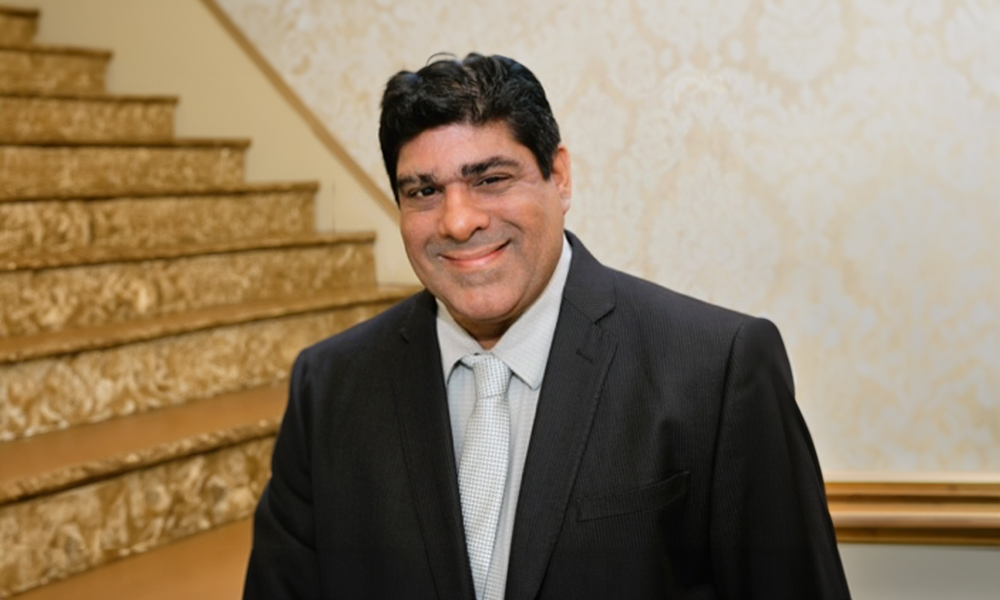SPRINGFIELD, MA… Establishing high-speed rail service between Springfield and Boston has significant support across the state, according to the latest survey from the Western New England University Polling Institute.
The telephone survey of 468 adults, conducted Oct. 24 through Nov. 7, found that 74 percent supported the idea, while 10 percent were opposed, 15 percent were unsure, and 1 percent declined to answer. The margin of error for the survey is plus or minus 4.5 percentage points.
Support was greatest in Western Massachusetts, where 87 percent of survey respondents endorsed the concept, but large majorities in other parts of the state also backed the proposal. Eighty percent of residents surveyed in Central Massachusetts supported the idea, as did 73 percent in Boston and surrounding suburbs, and 68 percent on the North and South Shores.
Backing for the idea also crossed party lines, with 80 percent of Democrats and 80 percent of Republicans expressing support, along with 68 percent of unenrolled voters. The sample includes 437 residents who said they are registered to vote, and the margin of error for the sub-sample of registered voters is plus or minus five percentage points.
State Senator Eric Lesser, D – Longmeadow, has been pushing for state funding to conduct a feasibility study of high-speed rail between Springfield and Boston, but so far has been unsuccessful. The state legislature’s joint Committee on Transportation held a hearing on the issue on Oct. 24.
While survey respondents voiced strong support for high-speed rail between Springfield and Boston, most had not heard or read much information about the concept. Only 23 percent said they had heard or read “a lot” of information or “some” information, while 77 percent said they had heard or read “a little” information or “none at all.” Awareness of the plan was highest in Western Massachusetts, where 45 percent said they had heard or read “a lot” of or “some” information, compared to 22 percent in Boston and surrounding suburbs, 17 percent on the North and South Shores, and 15 percent in Central Massachusetts.
Hearing more information about the proposal had a statistically significant relationship with support for the idea. Among those who had heard or read “a lot” of or “some” information, 81 percent backed the idea, compared to 72 percent of those who had heard or read “a little” information or none at all.
Tim Vercellotti, professor of political science and director of the Polling Institute at Western New England University, noted that as more of the public hears additional information about the issue, views could change. “State lawmakers are simply discussing whether to fund a feasibility study,” Vercellotti said. “If that study is funded and completed, and if discussion shifts to specific costs and benefits, opinions may change. Whether that change is in a positive or negative direction could depend on the results of a study.”
The survey also found that 45 percent of adults said they would be “very likely” or “somewhat likely” to use high-speed rail to travel between Springfield and Boston instead of using another form of transportation, while 53 percent said they would be “not very likely” or “not at all likely” to use the service.
Projected usage also varied by region, with 65 percent of respondents from Western Massachusetts saying they would be very or somewhat likely to use high-speed rail, compared to 52 percent of residents of Central Massachusetts, 45 percent of residents of Boston and surrounding suburbs, and 33 percent of those living on the North and South Shores. As awareness of the idea increased, so did the likelihood of using high-speed rail. Fifty-four percent of those who had heard or read “a lot” of information or “some” information said they would be very or somewhat likely to use high-speed rail, compared to 43 percent of those who had heard or read “a little” information or “none at all.”
The survey asked respondents who said they were very, somewhat, or not very likely to use high-speed rail to identify activities or purposes for which they would use the service. One-third said they would use high-speed rail for leisure purposes, such as attending a concert, play, sporting event, or recreational activity. Twenty-five percent said they would use high-speed rail to commute to a job, and 19 percent said they would use high-speed rail to visit family or friends.
Survey respondents who expressed support for or opposition to high-speed rail had an opportunity to explain why in their own words. The most common reasons for supporting high-speed rail were the need to reduce traffic on the Massachusetts Turnpike between Springfield and Boston, the environmental benefits of having fewer cars on the road, and improved access to jobs in Boston and affordable housing in Western Massachusetts.
Another recurring theme was that of sharing the economic dynamism of Boston with Springfield and western portions of the state. “Springfield doesn’t feel like part of the state,” said a respondent from Plymouth County, adding that high-speed rail would “create a connection so that people can (get) around and also improve the economy of Springfield.”
Other respondents said that high–speed rail would create a greater sense of parity between Western and Eastern Massachusetts. A respondent from Berkshire County said, “We’re like the poor cousin in the Berkshire Mountains.”
Opposition to the idea centered on the potential cost of high-speed rail and whether there is sufficient demand for it. Some respondents also noted that the existing commuter rail system in and around Boston needs to be improved before the state considers adding rail service to Western Massachusetts. “The old system needs to be reliable before you can add a new one,” said a resident of Middlesex County.
One respondent from Worcester County expressed skepticism that Central and Western Massachusetts would benefit from investment in high-speed rail. Rail service “would be one of the deals where we put up the money and Boston gets it,” the respondent said.
Complete results tables. http://www1.wne.edu/news/2017/11/highspeed-rail-tables.pdf
METHODOLOGY
The Western New England University Polling Institute conducted a telephone survey using live interviewers Oct. 24 through Nov. 7, 2017. Western New England University sponsored and funded the study. The survey sample consists of telephone interviews in English only with 468 adults ages 18 and older drawn from across Massachusetts using random-digit-dialing. The sample yielded 437 adults who said they are registered to vote in Massachusetts. Interviewers at the Polling Institute dialed household telephone numbers, known as “landline numbers,” and cell phone numbers using random samples obtained from Survey Sampling International of Shelton, CT. In order to draw a representative sample from the landline numbers, interviewers alternated asking for the youngest adult male or the youngest adult female age 18 or older who was home at the time of the call. Interviewers dialing cell phone numbers interviewed the respondent who answered the cell phone after confirming three things: (1) that the respondent was in a safe setting to complete the survey; (2) that the respondent was an adult age 18 or older; and (3) that the respondent was a resident of Massachusetts. The sample of all adults consisted of 241 interviews completed on landlines and 227 interviews completed on cell phones. The landline and cell phone data were combined and weighted to reflect the adult population of Massachusetts by gender, race, age, and county of residence using U.S. Census estimates for Massachusetts. The data also were weighted to adjust for cell phone and landline usage based on state-level estimates for Massachusetts from the National Center for Health Statistics and to adjust for voter registration by party using figures from the office of the Massachusetts Secretary of the Commonwealth. Complete results of the poll and the full text of the landline and cell phone versions of the survey are available at http://www1.wne.edu/polling-institute/index.cfm.
All surveys are subject to sampling error, which is the expected probable difference between interviewing everyone in a population versus a scientific sampling drawn from that population. The margin of sampling error for a sample of 468 adults is +/- 4.5 percent at a 95 percent confidence interval, and the margin of sampling error for a sample of 437 registered voters is +/- 5 percent at a 95 percent confidence interval. Thus if 70 percent of registered voters said they support the establishment of high speed rail between Springfield and Boston, one would be 95 percent sure that the true figure would be between 65 percent and 75 percent (70 percent +/- 5 percent) had all registered voters in Massachusetts been interviewed, rather than just a sample. Sampling error increases as the sample size decreases, so statements based on various population subgroups are subject to more error than are statements based on the total sample. Sampling error does not take into account other sources of variation inherent in public opinion studies, such as non-response, question wording, or context effects.
Established in 2005, the Western New England University Polling Institute conducts research on issues of importance to Massachusetts and the region. The Institute provides the University’s faculty and students with opportunities to participate in public opinion research. The Institute is a charter member of the Transparency Initiative, sponsored by the American Association for Public Opinion Research. The Transparency Initiative supports greater openness in the reporting of survey research methodology. Additional information about the Polling Institute is available from Dr. Tim Vercellotti, director of the Polling Institute, at polling@wne.edu.





